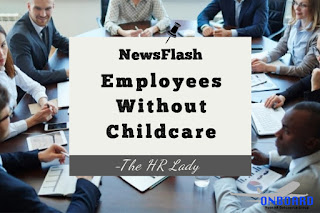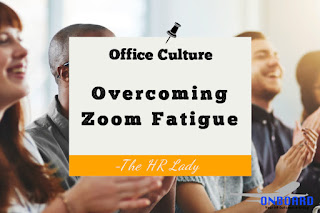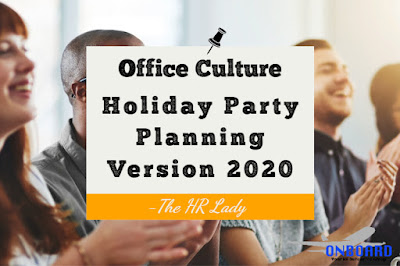NewsFlash: Closed Childcare Causes Workplace Complications
Closed Schools, Camps and Day Cares Raise Workplace Complications for Managers
With no end in sight to the pandemic, managers navigate a confusing landscape of child care conflicts
Florida State University seemed to draw a line in the sand last month in the COVID-19-era debate over work and child care. In a memo, the school stated that employees could no longer care for their children while they worked remotely, reinstating a prepandemic policy. The announcement sparked a national backlash and media coverage in news outlets including The New York Times, New York Post and People magazine. And within days, the university was forced to reverse course. "We want to be clear—our policy does allow employees to work from home while caring for children," the university said in a statement. That reversal illustrates how closed schools and summer camps are leading to major confusion among managers about what kind of leave they can approve and what kind of flexibility they can allow. "The rules seem to be all over the place, so managers are really all over the place in terms of what they feel they can accept from their employees," said Brian Kropp, a chief of research at Gartner, the Stamford, Conn.-based management consulting firm. "Managers don't always know the legal implications of their options and what their options are for their employees." The issue of juggling child care and work got some clarity last month as many summer camps—a child care staple for workers when school is out—closed due to the pandemic. The Department of Labor (DOL) issued a field assistance bulletin on June 26 saying employees could take paid leave under the Families First Coronavirus Response Act (FFCRA) to care for their children when a summer camp or summer program had closed because of the virus. The FFCRA requires covered employers to provide eligible employees with up to two weeks of paid sick leave and up to 12 weeks of expanded family and medical leave, of which up to 10 weeks may be paid, the DOL memo stated. Looking ahead, the reality is setting in that very few schools will be open this fall in the way they were before the pandemic. Polling from the Gallup Organization found that 54 percent of parents surveyed said their children's remote learning has been difficult to manage. Some of the most common challenges with remote learning are children's short attention spans or lack of motivation, according to the survey. Employees also say balancing work and helping kids with school is a big challenge. In addition, Gallup found in its survey of about 700 companies that child care is one of the biggest hurdles when asking employees to return to work during the pandemic; it is also one of the biggest drains on employee productivity. "The fact that many schools have not yet announced plans for fall has left many organizations in a difficult position for their own planning," said Ben Wigert, director of research and strategy in Gallup's workplace management division. To address the issue and allow working parents to take a break, some managers are publicizing leave options, including taking leave under the Family and Medical Leave Act (FMLA) if that option is available, or other full-pay, partial-pay or unpaid leave options, Wigert said. But employees and managers are sometimes confused by the type of leave that is available. Some people mistakenly refer to "emergency FMLA" as the time off available to care for kids whose schools have closed due to the coronavirus, when, in fact, this leave is available under the FFCRA. The FMLA does not cover such situations. At the start of the pandemic, the DOL issued a lengthy memo about the Emergency Family and Medical Leave Expansion Act (EFMLEA). Intermittent EFMLEA leave may be taken if the employer and employee agree to it. Employees must submit documentation that their school or child care provider is closed so the employee can use it to claim a tax credit for EFMLEA leave. EFMLEA is not in addition to regular FMLA leave, which is typically taken for medical issues related to a family member, or to care for a newborn or adopted baby or child. But what happens if parents feel their child needs their constant supervision for remote schooling? "Pre-COVID, I would have said no way," said Joan Casciari, a workplace attorney at Seyfarth Shaw in Chicago. "If employees have to stay home and babysit their children, then they are, in effect, working part time and would have to use PTO [paid time off] or other approved time off, as well as have the approval of their managers. Routine child care is not an FMLA qualifying event." Now, though, "employers are having to be more flexible and consider options that they hadn't even thought about six months ago," Casciari said. Parents of children with special needs have used intermittent FMLA leave to attend school meetings, therapies and medical appointments and, on occasion, to provide what would otherwise be viewed as child care. Managers need to require documentation from the employee, signed by a doctor, testifying to the child's medical needs because of a developmental disability or other FMLA-qualifying serious health condition. Some experts say this kind of intermittent leave is an option if parents need to show that their child's medical condition or disability requires them to oversee remote schooling beyond any entitlement under the FFCRA. Some managers are encouraging their companies to get more involved in helping to fill the child care hole, Wigert said. To that end, some companies are engaging children directly by providing virtual tutoring and home schooling, virtual camps, kid-oriented webinars, and daily challenges such as scavenger hunts and puzzles. Many managers have been given a list of activities to send around to their workers to help occupy their kids or links to online educational activities or videos. Other managers have allowed employees to voluntarily go on furlough to receive unemployment benefits while on leave to care for their children, Wigert said. Gartner's Kropp said one way to address the situation is for employers to allow for what he described as "a mindset of maximum flexibility." Managers, he said, are rightly confused about when to grant FMLA or emergency leave under the FFCRA. "Managers often don't want a situation where an employee is forced to take PTO or leave without pay," he said. "The decisions [managers] make now will define how [their companies] are viewed in the labor market over the long haul. The hope is that if we are flexible now, employees will pay us back with their efforts when the situation has finally improved." Holly Rosenkrantz is a freelance writer based in Washington, D.C. She is a former labor and workplace reporter for Bloomberg News and has written for The Washington Post, The New York Times, Business Insider and other publications. If you have any questions or concerns regarding this issue or any HR-related issues, please feel free to reach out to us for a free consultation!
|




Comments
Post a Comment